3-Strand Rope To Chain
Class 1 3-strand ropes are made from any or all of
the following fibers: Olefin, Polyester, Nylon
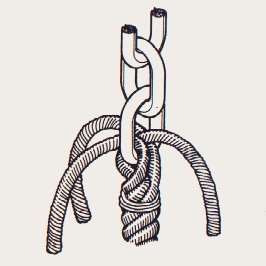
Although the 3-strand splice is the most common splice,
and simple to perform, technique is important to preserve splice strength.
Take care that the tucks lie neatly; rope strength can be lost if the
strands are twisted incorrectly.
Checkout the
rope to chain splice test provided US Sailing for more information
on the strength and viability of this splice.
Tools Required:
Fid; tape or whipping twine;
marking pen, scissors or a sharp knife; hot knife or heat source
 ; ruler.
; ruler.
STEP 1
12" from the bitter
end of the rope wrap with whipping
twine. Unlay the strands from the bitter end up to the whipped section.
Tape each individual strand at the bitter end to prevent unraveling. Label
each strand I, II, and III.


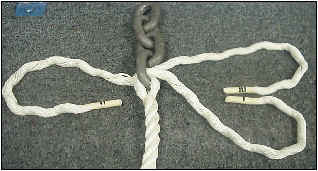 STEP
2
STEP
2
Line up the rope to the last link of the
chain so that the "II" strand is in the middle and the "I" and "III" are
on either end. Take the "II" strand and pass it through one side of the
chain link. Strands "I" and "III" are to pass through the chain link from
the opposite side, staying on the outside of strand "II".
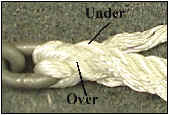 STEP
3
STEP
3
Begin tucking the strands in an over
one, under one pattern, as shown.
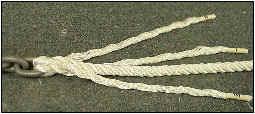
STEP 4
Perform 2 tucks with all three strands. After the 2nd
tuck, thin the three strands by 1/3 the number of yarns. Trim excess
yarns off strands, using a rope
cutter, and leave a 3/4" tail.
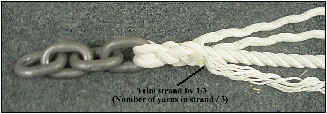
Tuck all the strands 2 more times and thin by 1/3
again, using the same procedure.
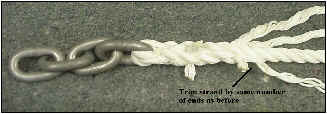
Perform 2 final tucks with all three strands. Trim
excess off strands leaving approximately 3/4".
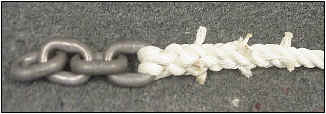
NOTE: This method of joining
rope and chain is designed to minimize chafe between rope and chain, but
as a matter of prudent seamanship, it should be checked regularly and
remade if there is any evidence of wear.


Great article. To get more technical details you can also look at this link
ReplyDeletehttp://www.garwareropes.com/strand-plateena.html